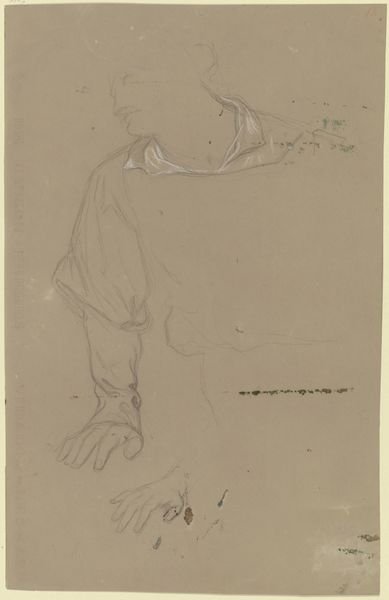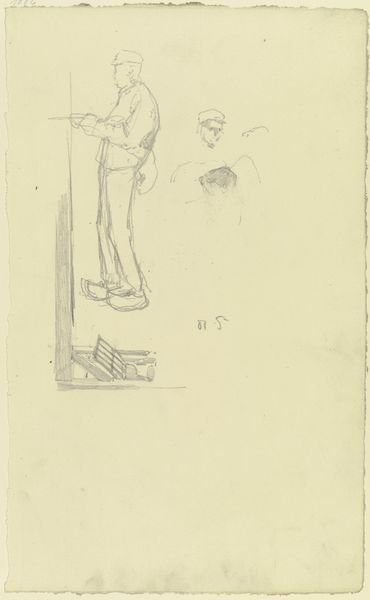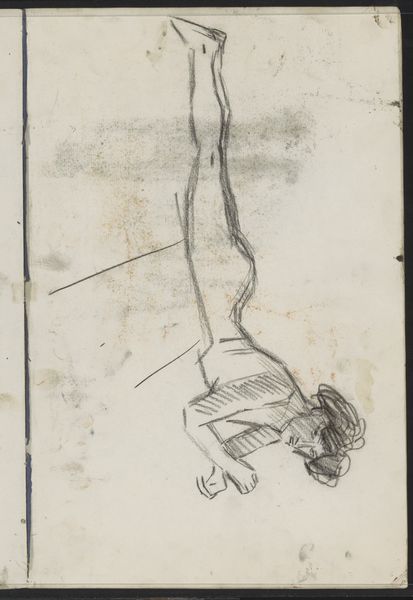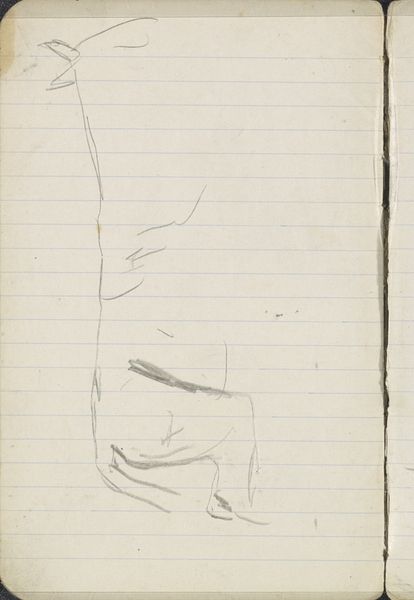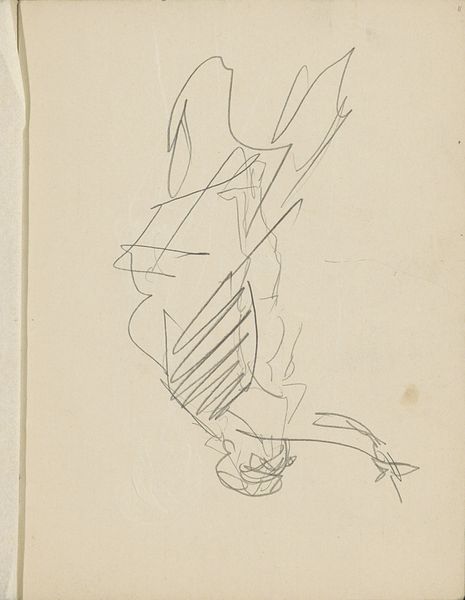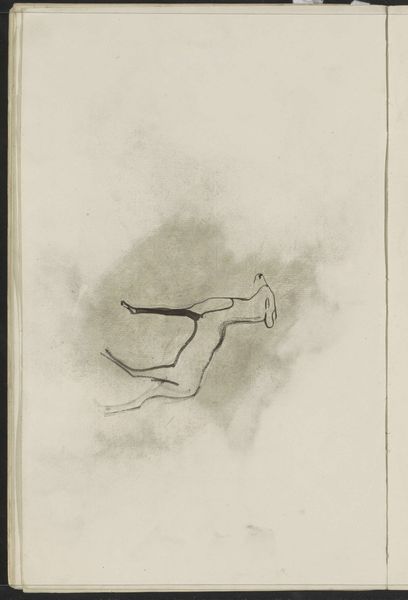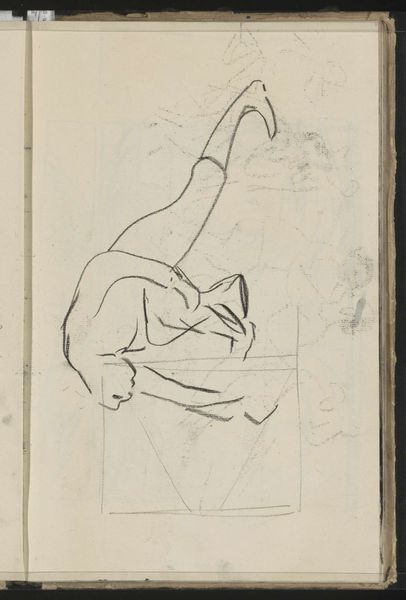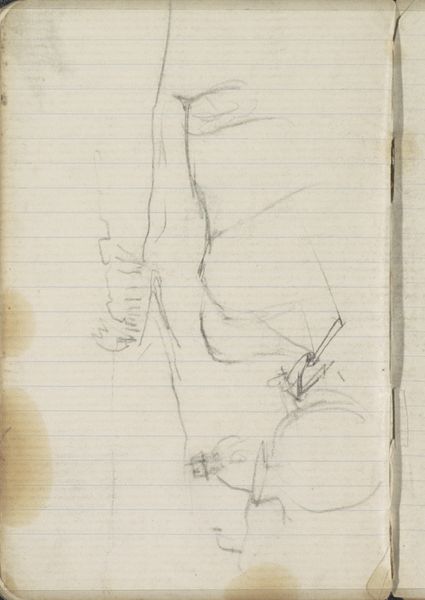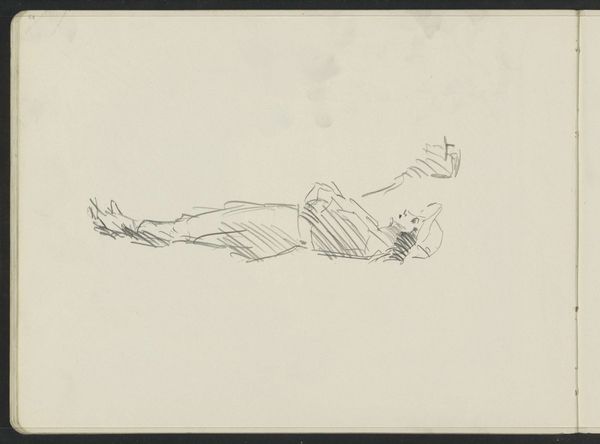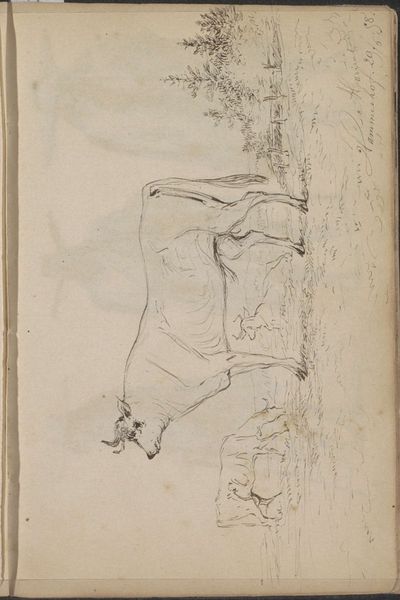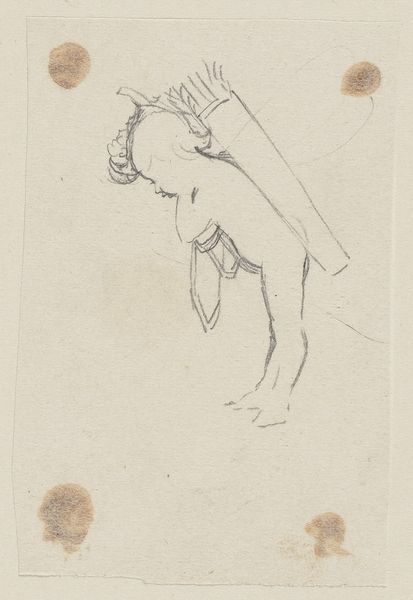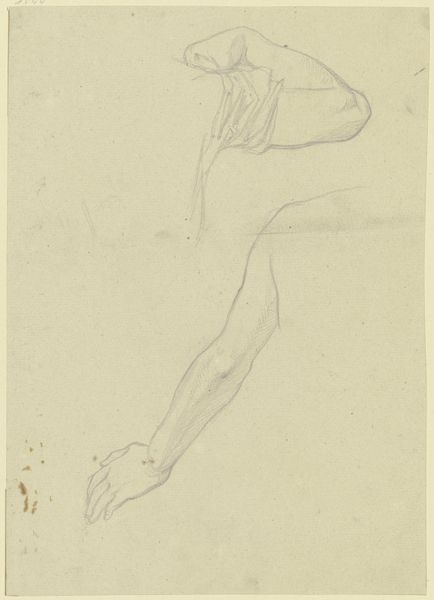
drawing, paper, pencil
#
portrait
#
drawing
#
16_19th-century
#
paper
#
pencil
#
academic-art
Copyright: Public Domain
Curator: The ghostly image before us is a drawing titled "Bildnis eines Mannes in Uniform, Detail des rechten Arms," attributed to Otto Scholderer, and housed here at the Städel Museum. Editor: My immediate impression is one of restraint. It's just a hand, an arm, but something about the spareness speaks volumes, a fragment hinting at power perhaps. Curator: Precisely. The symbol of the uniform is key, encoding narratives of duty, status, and belonging within the 19th-century mindset. Consider the deliberate detailing on the cuff, the almost imperceptible signet ring. These are quiet pronouncements of identity. Editor: But that very identity feels…truncated. We’re denied the face, the full context. It’s almost an exercise in studying a synecdoche. And what of the labor involved in its creation? Graphite on paper, simple materials meticulously worked. What kind of access did Scholderer have, and why just a sketch? Curator: A sketch that elevates the quotidian. We tend to project a rigid order on the military and its visual representation, yet here, the soft lines suggest a humanizing ambiguity. Perhaps the artist meant to disrupt this traditional power narrative? Or the goal could be purely academic, like figure studies that often survive isolated from the rest of an artwork. Editor: Disrupt, or perhaps, merely observe. What strikes me most is how the paper itself, aged and stained, becomes part of the material statement. It isn't pristine; it's been handled, stored, survived. A direct trace, we can surmise it had some utility. Curator: The staining indeed evokes a passage of time, reminding us that these visual shorthands shift their meanings across generations. A uniform from one era might signify freedom; to another, oppression. It becomes our duty to investigate such possibilities when viewing it. Editor: Absolutely, especially given its incompleteness. It pushes us, compels us to project, to interpret, and reconstruct based on fragmented clues, reminding us of the artwork's journey as an object too. Curator: Ultimately, this quiet image prompts us to consider what we deem worthy of preserving. It speaks of power and loss, of symbols enduring and transforming. Editor: A powerful fragment indeed, urging us to ponder not just what it depicts but how it got here, this partial glimpse into a person, a process, and history.
Comments
No comments
Be the first to comment and join the conversation on the ultimate creative platform.
